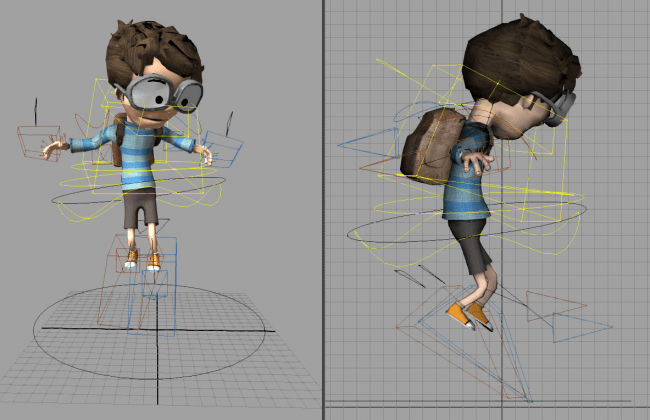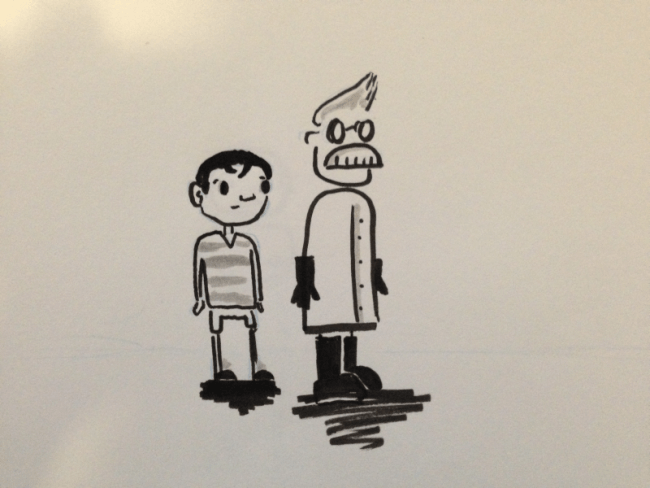- Wondering how to get Monopoly GO! free rolls? Well, you’ve come to the right place. In this guide, we provide you with a bunch of tips and tricks to get some free rolls for the hit new mobile game. We’ll …
Best Roblox Horror Games to Play Right Now – Updated Weekly
By Adele Wilson
Our Best Roblox Horror Games guide features the scariest and most creative experiences to play right now on the platform!The BEST Roblox Games of The Week – Games You Need To Play!
By Sho Roberts
Our feature shares our pick for the Best Roblox Games of the week! With our feature, we guarantee you'll find something new to play!Type Soul Clan Rarity Guide – All Legendary And Common Clans Listed!
By Nathan Ball
Wondering what your odds of rolling a particular Clan are? Wonder no more, with my handy Type Soul Clan Rarity guide.
Telekinesis Kyle Developer Diary #2
It’s hard to believe we’ve come this far. We started this game six months ago with a single sketch of an awkward-looking kid standing next to a mad scientist. Since then, it’s grown into a full-fledged game and our hero, Kyle, is a fully animated model, navigating an increasingly rich 3D environment. With each week we have seen Telekinesis Kyle get closer to completion, but the question in the back of our minds is always, “How can we best tell this story?”

It’s hard to believe we’ve come this far. We started this game six months ago with a single sketch of an awkward-looking kid standing next to a mad scientist. Since then, it’s grown into a full-fledged game and our hero, Kyle, is a fully animated model, navigating an increasingly rich 3D environment. With each week we have seen Telekinesis Kyle get closer to completion, but the question in the back of our minds is always, “How can we best tell this story?”
Indeed, story has been a core component of this game from the start. It’s the first title of ours to have a strong story element, and on a personal level, it’s my first experience writing a script for a mobile device. As I’ve learned, there are important considerations when crafting a story both for the mobile platform and the mobile audience.
If you’re not familiar with the game, it’s the story of a young boy named Kyle. He’s just a regular kid, with regular telekinetic powers! When his powers are discovered, he is immediately whisked away to what he’s told is a school for gifted kids, but which turns out to be a mountain fortress run by one Dr. Professor and a mysterious ‘Benefactor.’
There are a number of unique challenges in how a story unfolds on a mobile device. First, and perhaps most importantly, you can’t assume anyone will be listening. I mean this in a literal sense: not every user will have headphones in their ears. We plan to implement subtitles into the game to reach users not listening to the dialogue. In addition, this aids users who are hard of hearing, and makes localization easier.
When designing the ‘set-pieces’ of the story, the moments that drive the story forward, it was important that players would be able to discern what was going on, even without being able to hear the dialogue. These concerns are more or less unique to this platform, as most PC or console gamers will have headphones or speakers, but there are also considerations for the mobile audience itself. Mobile games are often played while, say, waiting in line. Players may not have a lot of time to play the game, so brevity is key. Every sequence needs to tell the story efficiently.
That said, we aim for the game to be fully voice-acted. For those who are invested in the story, we felt it was necessary, and in addition to the dialogue during the ‘story’ sequences, our hero Kyle and his antagonist Dr. Professor will banter during the levels, either with hints for the player, or simply for comedic effect. At least, we find the dialogue funny. Brainstorming sessions are always a joy, throwing out stupid lines and giggling like idiots.
We tried to keep our story sequences short and punchy, and to make them integrate into the flow of the game. Our game starts with a short introductory cinematic, and the first level picks up immediately where that leaves off. We loved the ‘seamless’ nature of this, but also are very aware of how short the attention span of a busy mobile gamer can be, so for extra variety, we also have comic book sequences to break up the action and to keep the story fresh.
We wanted to make the story an integral part of the gameplay experience. Changes in the look and feel of the individual puzzles are closely tied to the story, and the story itself is built upon twists and turns (no spoilers) to hopefully keep the mobile user engaged. Maybe this is a lofty goal, but we truly wanted the audience to feel for Kyle. He’s shy and quiet, thrust into an improbable situation, surrounded by all kinds of perils and crazy adults. The story frames Kyle up as the straight man, trying to learn – as the player does – just what’s going on. A number of art decisions tie into reinforcing this idea, but we’ll save that for another diary…
About Vellum Interactive
Vellum Interactive was founded in July 2012 by Brian Reinhart and Daniel Luecke because of their life-long desire to create video games. We started the company with a few simple 2D games like the endless runner, DreamCat, but decided it was time to tackle a truly ambitious project. We hired Atlanta based sound designer Thomas Dalhberg, and we hired our first 3D artist, Delfin Diaz. We started work on Telekinesis Kyle in December 2012.
More articles...
Monopoly GO! Free Rolls – Links For Free Dice
By Glen Fox
Wondering how to get Monopoly GO! free rolls? Well, you’ve come to the right place. In this guide, we provide you with a bunch of tips and tricks to get some free rolls for the hit new mobile game. We’ll …Best Roblox Horror Games to Play Right Now – Updated Weekly
By Adele Wilson
Our Best Roblox Horror Games guide features the scariest and most creative experiences to play right now on the platform!The BEST Roblox Games of The Week – Games You Need To Play!
By Sho Roberts
Our feature shares our pick for the Best Roblox Games of the week! With our feature, we guarantee you'll find something new to play!Type Soul Clan Rarity Guide – All Legendary And Common Clans Listed!
By Nathan Ball
Wondering what your odds of rolling a particular Clan are? Wonder no more, with my handy Type Soul Clan Rarity guide.








 “
“